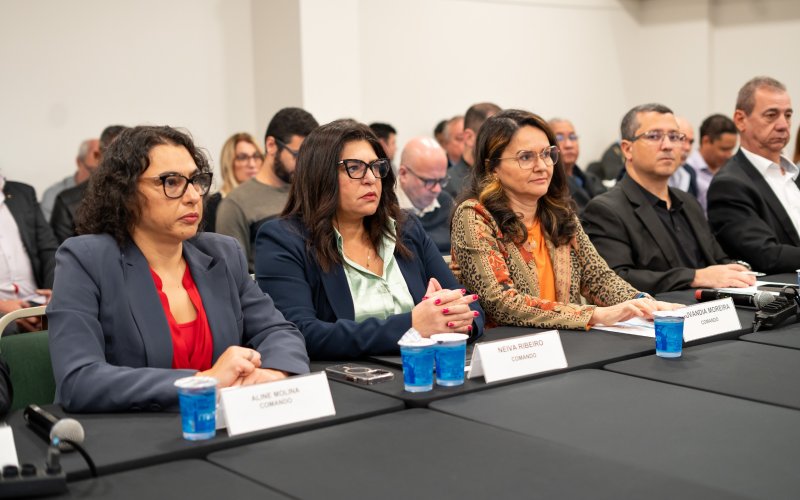
Américo Pisca-Pisca was a character from Monteiro Lobato who saw fault in everything and always wanted to do things differently. Much of the Brazilian legal community likens him when it comes to tax reform.
Another part of the same society behaves like a cow in a nativity scene, treating the reform brought about by PEC 45 as a dogma of faith, not amenable to any questioning.
As is often the case, the truth is not in the extreme.
Of course, the adoption of the VAT model is good news. It’s a system that’s been adopted in nearly 200 countries and works so well it’s best not to want to reinvent the wheel. Therefore, the approval in the chamber of the reform that makes it possible to adopt a more efficient, transparent and equitable tax system based on the double VAT is positive: through a tax due to states and municipalities, the tax on goods and services (IBS), and a contribution to goods and services (CBS) owed to the union.
Based on the new constitutional guidelines, the country will be able to untie the knots of our current complex tax system and reduce the absurd amount of tax laws, standardize tax rates and promote a broad credit system.
Also commendable is the sensitivity of the legislator in overcoming the myth of the single rate and ensuring tax cuts (by 60%) for strategic sectors, such as education, health, transportation, etc. Projections of different domains facilitate the transition to the new system and guarantee the specifics of the basic sectors of the economy.
This practice is common in international taxation. While Brazil has established 3 rate bands (100%, 40% and 0%), the world’s largest VAT adopters expect similar models. Germany also has three tax brackets. Switzerland, the United Kingdom and Norway have 4 tracks, while Italy and France have 5 tracks.
On the other hand, it seems inevitable to discuss priority selection criteria for applying the reduced rate. Is it reasonable for film productions to benefit, and air transport – in a country of continental proportions – not? Is it fair for sporting activities, such as a golf tournament, to be taxed less than basic inputs such as energy or communications? This is today’s drawing.
Many of these inconsistencies were certainly due to the rush with which the PEC was approved. It should be noted that the text that was voted on, in the third alternative, became known minutes before the vote in the plenary session of the Council.
Even worse, during the plenary session, it was replaced by a threaded amendment that brought in many turtles, without enough time for members of Congress to appreciate the changes in the previously analyzed bill.
Among the amendments promoted almost in the dead of night (literally), one that created a new government contribution on primary and semi-finished products stands out negatively. Creating this new type of tax violates the goals of simplification and neutrality that the reform promised.
Also of concern is the complete lack of transparency by federal revenue throughout the debate, omitting calculations and simulations that would have allowed an estimate of the appropriate rate of neutral tax reform. This is the main uncertainty for the taxpayer who wants to know how much he is going to pay.
The original expectation had already been increased, at the rate of 25% – as 9% would be due to the Federation and 16% to the States and Municipalities – when the Federation, on filing PL 3.887/20, which would regulate CBS, expressed that desire of 12% for you.
With this, CBS + IBS is expected to be at least 28%.
It is quite possible that we have the highest VAT in the world, surpassing that of Scandinavia, which is 25%, and even that of Hungary, which is 27%. But few people seem to be concerned about this.
It also raises the concern that important aspects have been shoved with the belly, diverted to the complementary law. There are at least 57 references to the complementary law in the PEC, and it will provide, in addition to defining the general rules for value-added tax, differentiated systems and requirements for compensation and refund of accumulated taxes, all cases of choosing the tax burden, as well as the form of representation and operation of the Federal Council, which He will also be responsible for administering tax credits.
All of this generates legal uncertainty—justified by the history of the national tax system and the state’s outrage over collection. After all, a dog who has been bitten by a snake is fully justified in being afraid of sausages.
Moreover, there are doubts about the application of the double value-added tax model (one tax for the federation, and another for the states and municipalities). At the same time that the KPU provides for these taxes like the Siamese twins, it also provides for their regulation through separate laws. Now, if the tax rules are to be equal, why are two different laws, one by the Federal Council and the other by the Federation?
Finally, it is unfortunate that the PEC missed the opportunity to address the issue of the PIS/COFINS backlog, and contented itself with dealing with the ICMS backlog by offering compensation in the long term for 20 years. The text still leaves open the risk of a new accumulation of export credits by not setting a deadline for their return from the outset. When implementing the new system, it is highly recommended that these issues be addressed.
These ambiguities will surely be dealt with quietly in the Senate. The reform is welcome, but consider the well-known warning from Supreme Court Justice John Marshall: “The power to tax includes the power to destroy.”
Luiz Gustavo Bichara and Bruno Toledo Ciccia are partners at Bichara Advogados.
Luis Gustavo Bechara and Bruno Toledo Ciccia

“Friendly zombie guru. Avid pop culture scholar. Freelance travel geek. Wannabe troublemaker. Coffee specialist.”






